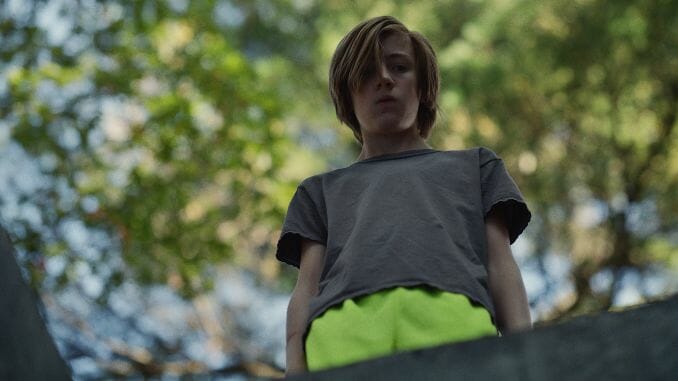Not Quite Thriller, Drama, or Horror, John and the Hole is Mostly Nothing at All

It’s hard to say what’s going on with John, the titular preteen who decides one day to drug his whole family and place them in an unfinished, abandoned bunker on the land near their home. And it’s as hard to know what’s going on with John—given no real depth or motivation to his character—as it is with the film that he’s in, a purposefully ambiguous genre hybrid that embraces so little of any one genre that it ends up feeling like it belongs to no genre at all. Similarly, John and the Hole does not want to adhere to any theme or thesis; it’s as if the film wants to be nothing, as if “It’s just, like, nothing. It’s just, like, not important, like, it doesn’t matter.” A completely detached exercise in bewilderment that’s enigmatic nature comes off less Lynchian and more “unfinished scriptian,” director Pascual Sisto’s feature debut aims for intrigue but settles comfortably in mediocrity.
John (an unnerving, annoying Charlie Shotwell) is like any other adolescent kid. He’s nervous to answer questions in class, he skateboards, plays video games, annoys his older sister (Taissa Farmiga) and revels in saying the word “fuck” over the phone with his belligerent friend Peter (Ben O’Brien), whom it can be inferred recently left with his family for Boston. John lives comfortably in an upper-class, suburban mini-mansion with sister Laurie, mom Anna (Jennifer Ehle) and dad Brad (Michael C. Hall). But, undoubtedly, there’s something off about John. Maybe he’s a little too quiet, a little too inquisitive—or maybe he’s just a little too normal, which I suppose is meant to be the point. Thus, John’s natural, childish desires to be rid of his family and have his house to himself manifest as John giving his family each a hefty dose of sleeping pills and lugging them into a nearby pit once intended to be a bomb shelter. Although, it’s just a little bit hard to believe that the scrawny, waifish boy could have transported his three adult family members (all of them probably near double his body weight) and gotten them safely into the hole without having to shove them haphazardly over the edge.
At first thought to be some sort of prank, John’s family quickly realizes that he has left them down there indefinitely, possibly for dead, though he occasionally visits to deliver them food and water while leaving their questions and pleas for help unanswered. In the meantime, John does anything a normal tween would do if he was able to be rid of adults for a period of time: Drives their car, takes out hundreds of dollars from their bank accounts, buys burgers and mountains of chicken nuggets, and has Peter come to visit him for a weekend where they do and eat whatever they want. A kid’s greatest dream, a world free of adults.
-

-

-

-

-

-

-

-

-

-

-

-

-

-

-

-

-

-

-

-

-

-

-

-

-

-

-

-

-

-

-

-

-

-

-

-

-

-

-

-








































